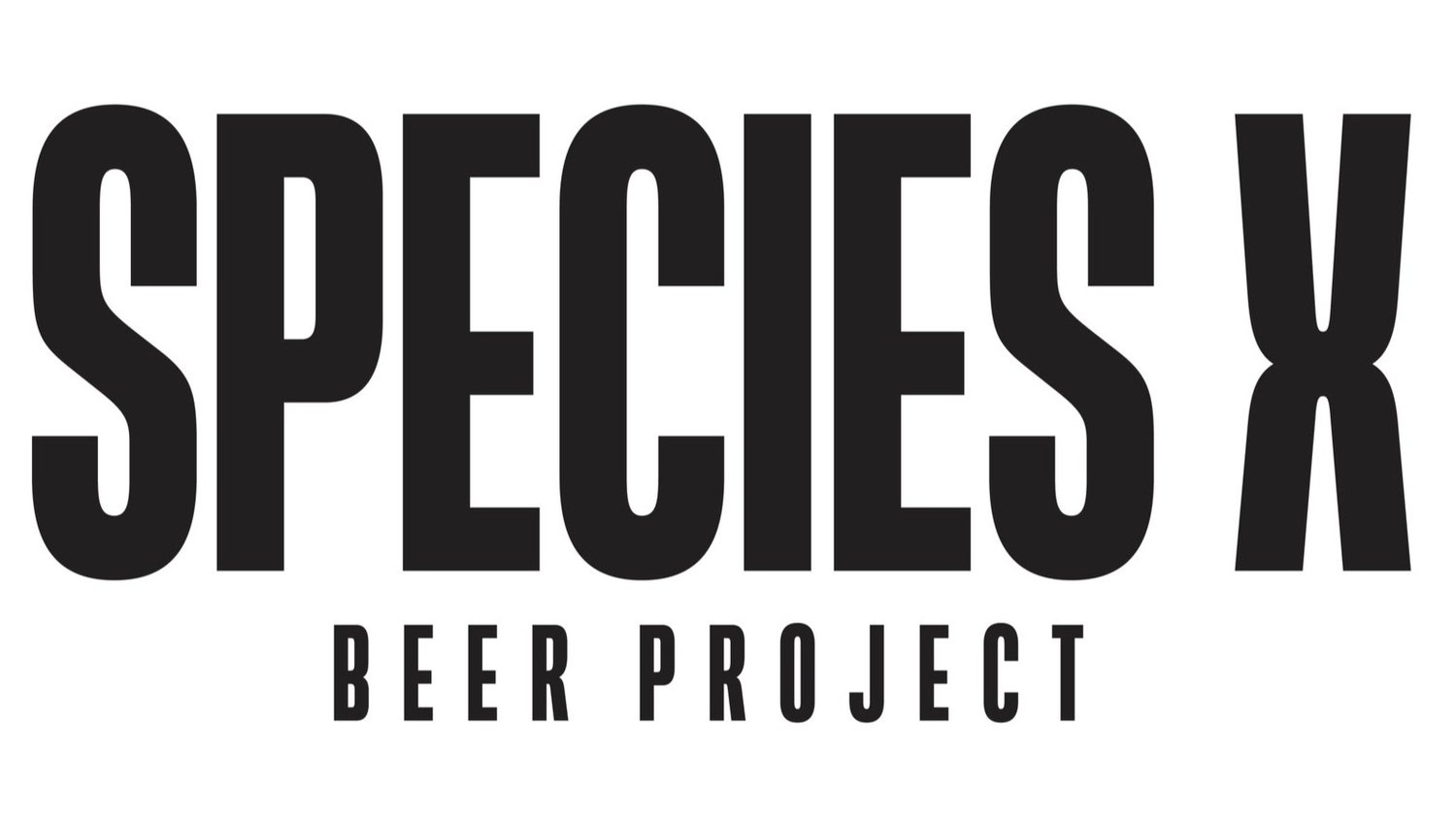CARBON SPECIES
BEERS
LUNAR BASE
ABV: 4.8%
STYLE: Lager conditioned Blonde Ale
SPECIES OF FOCUS: GE S. cerevisiae
DESCRIPTION: Brewed w/ Berkeley Superbloom yeast to create compounds reminiscent of Cascade hops.
ORANGE SNAP
ABV: 5.0%
STYLE: Fruited American Wheat Ale
SPECIES OF FOCUS: GE S. cerevisiae
DESCRIPTION: American Wheat Ale with Orange fermented with GE bound thiol releasing Omega Cosmic Punch.

CARBON SPECIES
“Carbon” species are biological in make-up, and are either novel or of forgotten origins, relative to humans. We are utilizing these strains to add novel drinking experiences to our beer.

Carbon Species Group: GE
GE yeast are sourced from both Species X and third party sources, with the goal of adding, removing, suppressing, and amplifying specific aroma and flavor compounds. Techniques used include, but are not limited to, plasmid transformation and CRISPR cas-9.
Name: Cosmic Punch®
Source: Omega Yeast
Base Species: Saccharomyces cerevisiae
Modification: Releases bound thiols.
“A Thiolized® version of our popular hazy strain, British Ale V (OYL-011), Cosmic Punch® generates thiols through biotransformation, releasing tropical aromas experienced in southern hemisphere hops and New Zealand Sauvignon Blanc. This punchy strain unleashes vibrant grapefruit, passion fruit and guava notes. Expect the same performance and haze you get from British V, but with additional thiol aromas. Experiment with mash hopping or wine grape-derived products to push even more thiols.” - Omega Yeast Website
Name: Chico Superbloom®
Source: Berkeley Yeast
Base Species: Saccharomyces cerevisiae
Modification: Excretion of hop compounds.
“Chico Superbloom is an amazing demonstration of the potential of genetic engineering. This strain produces the three primary flavor determinants of cascade hops, which are the terpenes linalool, geraniol, and citronellol. The net result is not cascade hops, but rather a bouquet of orange blossom, geranium, lime peel, and lemon zest. Perfect for West Coast IPAs and pale ales.” - Berkeley Yeast Website
Name: Rave
Source: Species X Beer Project
Base Species: Saccharomyces cerevisiae
Modification: Fluoresces in the presence of UV-light or blacklight.
A GFP (Green fluorescent protein) was introduced to a Conan yeast strain via simple transformation of a circular piece of DNA known as a plasmid. This was mostly done for proof of concept and practice, and will not be used for producing beer.

**Image made using Stable Diffusion**
Carbon Species Group: Novel Capture
Novel captured yeast cultures refer to yeast strains sourced from the wild or from mixed cultures not traditionally associated with beer brewing. These strains are isolated and propagated either by third parties or in-house at Species X, then banked for future use.
Name: Longsword
Source: Medieval sourdough culture from a Welsh family in Europe.
Base Species: Saccharomyces cerevisiae
Discovery Source: Species X Beer Project
The Welsh family from whom we received the dry mixed culture attests to its certification and verification, asserting its continuous propagation since medieval times. Given its English heritage, this yeast is a stellar choice for hazy IPAs. It also possesses the robustness required for barleywines and stouts. The yeast imparts pronounced notes of lemon and lime zest, a hint of fruity pithiness, and is renowned for its exceptional haze production.

Carbon Species Group: Mutagenesis
Mutagenesis can be used to generate novel traits in yeast by first streaking a yeast strain on a petri dish to produce individual colonies, then exposing the colonies to a mutagen to induce mutations. After the exposure, colonies are replica plated onto media selecting for the desired new trait. Growing colonies are isolated and tested to confirm they have acquired the trait through mutagen-induced mutations. The protocol harnesses UV's ability to produce random yet heritable mutations in yeast DNA.
At Species X, we primarily focus on harnessing UV light.
Name: Nightmare
Source: Species X Beer Project lab
Base Species: Brettanomyces blend, various (TBD)
Discovery Source: Species X Beer Project
The goal was to create a mutated strain of Brett that could not only survive, but thrive, in highly acidic mixed culture bottle conditioning environments. After multiple rounds of UV mutagenesis and selection on acidic media, a promising mutant strain emerged. This new variant had acquired the ability to vigorously ferment wort at acid levels that would kill the source strain. Through induced random mutations and selective pressure, the yeast gained adaptive genetic changes enabling robust growth under extreme acidity, as well as a markedly increased fermentation rate. The directed evolution approach successfully produced a novel Brett strain with the potential to become nightmares for some, but the fulfillment of dreams for others.

**Image made using Stable Diffusion**
Carbon Species Group: Hybridization
Various methods (of which the list of is quite extensive) take advantage of yeast mating, cell fusion, cytoplasmic mixing, and artificial chromosome transfer to combine genomes of two yeast strains into hybrids. The hybrids can then be isolated using selective conditions or tetrad analysis.
Name: Mangosteeni®
Source: Imperial Yeast lab
Base Species: Saccharomyces cerevisiae x Saccharomyces offspring
Discovery Source: Imperial Yeast
“Developed for its excellent attenuation, prompt reduction of diacetyl, and versatility brewing a wide variety of ales and IPAs. Our lab created this new Saccharomyces Cerevisiae strain by isolating two unique strains, resulting in a hybrid that is an efficient and highly flavorful agent for fermentation. It boasts a robust flavor profile of ripe tropical fruit, strawberry, and lychee that beautifully complements big hop additions.”

Carbon Species Group: Spore Germination
Samples containing dormant yeast spores are collected from ancient artifacts such as brewing vessels or pottery used to store fermented beverages. These hardy spores have preserved yeast DNA across millennia. In the microbiology lab, spores are isolated from artifact residues and cultured on growth medium tailored to the nutritional needs of each primitive yeast strain. A single viable spore multiplies into a colony, which is then propagated to yield enough yeast for experimental brewing. Through this process, yeast strains from ancient civilizations are resurrected after hundreds to thousands of years in deep dormancy. Reviving these spores allows their unique flavors and brewing qualities from antiquity to be tasted again. It also gives beer enthusiasts and researchers insight into ancient brewing traditions, as microbiology techniques permit these "sleeping" yeasts from the distant past to awaken and be studied and consumed in the modern era.
**Image made using Stable Diffusion**
Name: PTS-900BCE
Source: Primer’s Yeast
Base Species: Saccharomyces cerevisiae
Discovery Source: the ancient site of Gath of the Philistines (Tel es-Safi) in Israel.
“This strain dates back to the Iron IIA period, approximately 9th century BCE.”
“It produces a unique stone fruit/berry note that can add complexity and depth to your beer. This strain type has a relative low capability to metabolize Maltotriose which gives it a distinct full bodied, rounded and slightly sweetish result in the end product.”



